The traits in Mutt Mixer are based on real dog traits! Read on to learn more about the genes and alleles behind these trait differences.
A Few Words About Genes
Most genes code for proteins. Proteins build the body and make it work. (Some genes code for RNA molecules that have a specific job in the body.)
Different versions of genes are called alleles (uh-LEELZ). Some differences between alleles can affect how the proteins they code for work. Others affect gene expression — differences in when, where, or how much protein is made from a gene. Through these protein-level effects, genes work together to shape traits — the characteristics of a living thing.
Coat Color and Pattern
Lots of genes together affect the color and pattern of a dog’s coat. Some of of these genes also affect eye color and skin color — for example, on the nose and foot pads. These genes code for proteins that control the production of colored pigments. The proteins can affect the type, location, and amount of pigments in a dog’s coat.
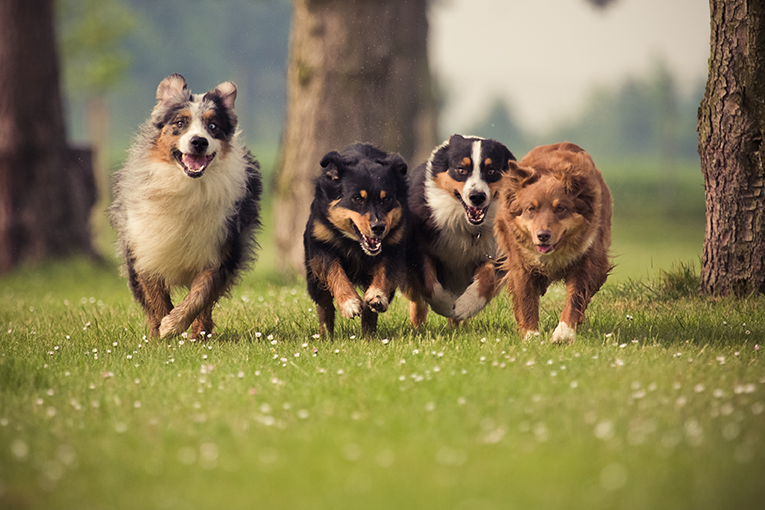
The color in dogs' fur comes from pigments. Different pigments can range from red to yellow or black to brown. Fur with no pigment is white.
Color
Gene — ASIP or Agouti (uh-GOO-dee) (also called the 'A locus')
Protein — Agouti signaling protein (ASIP)
Protein function — Interacts with another protein, called MC1R. Together they tell cells to make either black or red pigments. This is called "pigment switching."
Alleles
Sable: completely red
Wolf grey: Most individual hairs are banded with differing amounts of black and red. Some hairs on the back are all black, and some on the belly are a pale cream. This is the "wild-type" color for wolves, the ancestor to dogs.
Tan points: mostly black with red on some body parts
Recessive black: completely black
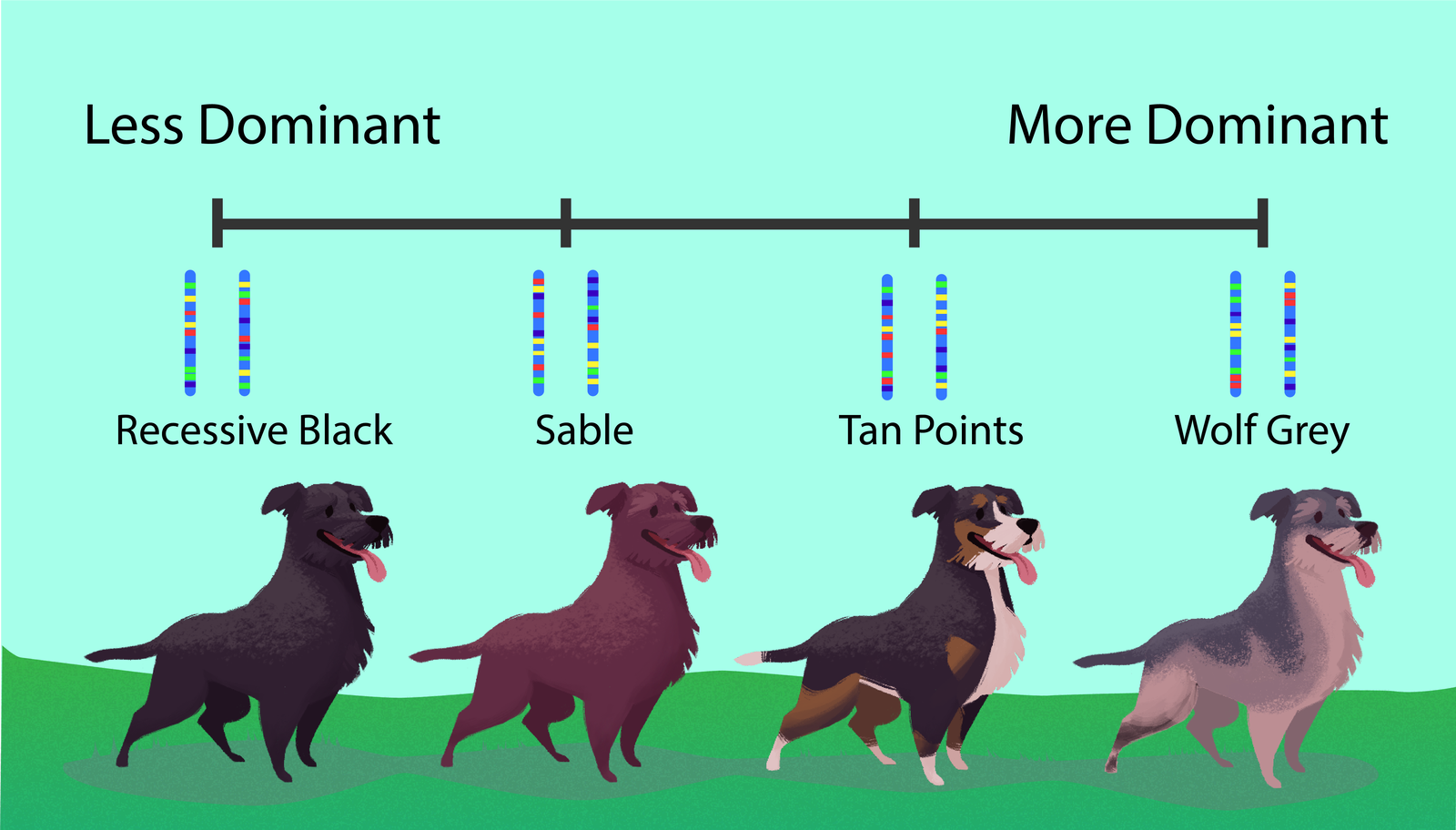
The ASIP gene affects color. It comes in four alleles, with a hierarchy of dominance.
Cover Color
Gene — DEFB103 (also called CBD103 or 'K locus')
Protein — Canine beta-defensin 103 (CBD103)
Protein function — Like Agouti signaling protein, this protein also interacts with MC1R protein to control switching between red or black pigments. When the protein is more active (as with the 'black' allele), it blocks cells from making red pigments, and they make only black. This protein has a second job, too. It protects the skin from harmful bacteria.
Alleles
Clear: The color alleles show through. This is the "wild-type" allele.
Black: Only black pigments are made, no matter what the color alleles are.
Brindle: This allele doesn't appear in Mutt Mixer, but many dog breeds have it. It lets the color alleles show through, but not completely. Any part of the dog's body that the color alleles would make black becomes brindled — red with black stripes.
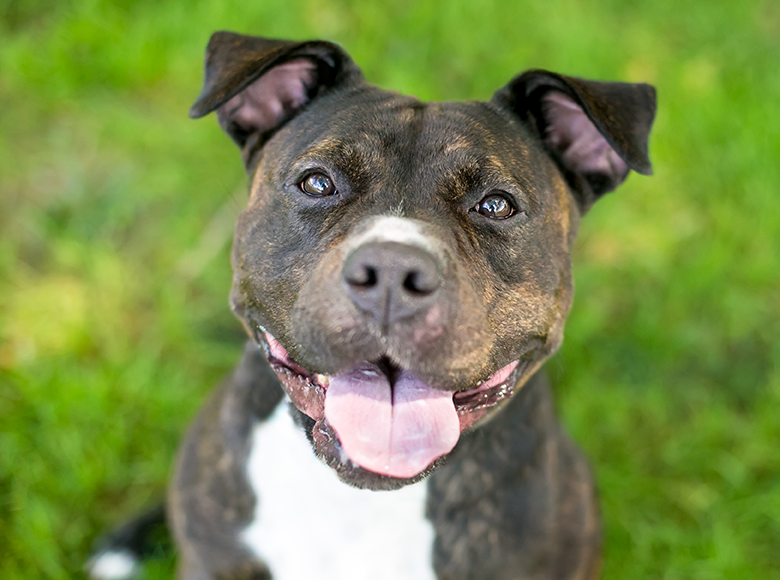
White Spotting
(also called S series, or piebald)
With white spotting, certain areas of the dog’s body are white. Mutt Mixer has one gene that affects this trait, with just two alleles. In reality, there are many alleles of this gene that cause a wider range of white spotting — from pure white to small white areas on the chest, toes, or tail. Variations in other genes can also affect white spotting.
Gene — MITF
Protein — microphthalmia associated transcription factor
Protein function — This protein affects the survival of pigment-making cells and also how they move through the body during embryonic development.

Pigment-making cells form during embryonic development along the middle of the back. From there, they crawl outward, spreading across the body. If no pigment-making cells survive, the dog is completely white. If some survive but don’t spread very far, the dog is mostly white with patches of color. If they spread all the way to the tips of the ears and tail, the dog has no white spotting. Anything in between gives a range of patterns.
Lots of other domesticated species have a form of white spotting—like horses, cows, cats, goats, and more. That’s because some of the same genes that affect pigment patterns may also help to shape behavior. When people selected tame, friendly animals to breed, certain physical traits may have come out as a side effect. This may also be true of other traits common in domesticated species, like floppy ears, short snouts, and curled tails.
To learn more, watch this video from NPR’s Skunk Bear: Why Dogs Have Floppy Ears: An Animated Tale.
Dilution
Dogs with the dilution trait have fur that is lighter in color. They may make less pigment overall, or the pigment may be clumped together, making it look lighter.
In Mutt Mixer, there’s just one dilution gene with two alleles that affect all pigment colors. In reality, at least four genes affect pigment intensity, each with multiple alleles. Some are found only in certain breeds, and some affect red and black (or brown) pigments differently.
Melanophilin (MLPH, or D locus) affects black and red pigment dilution. Researchers have found at least 4 alleles of this gene that affect pigment dilution in different breeds.
MFSD12M affects red pigment intensity. Different alleles cause fur to be cream, fawn, or tan.
KITLG affects red pigment intensity, along with black in some breeds. One allele gives some dogs a dark-red coat.
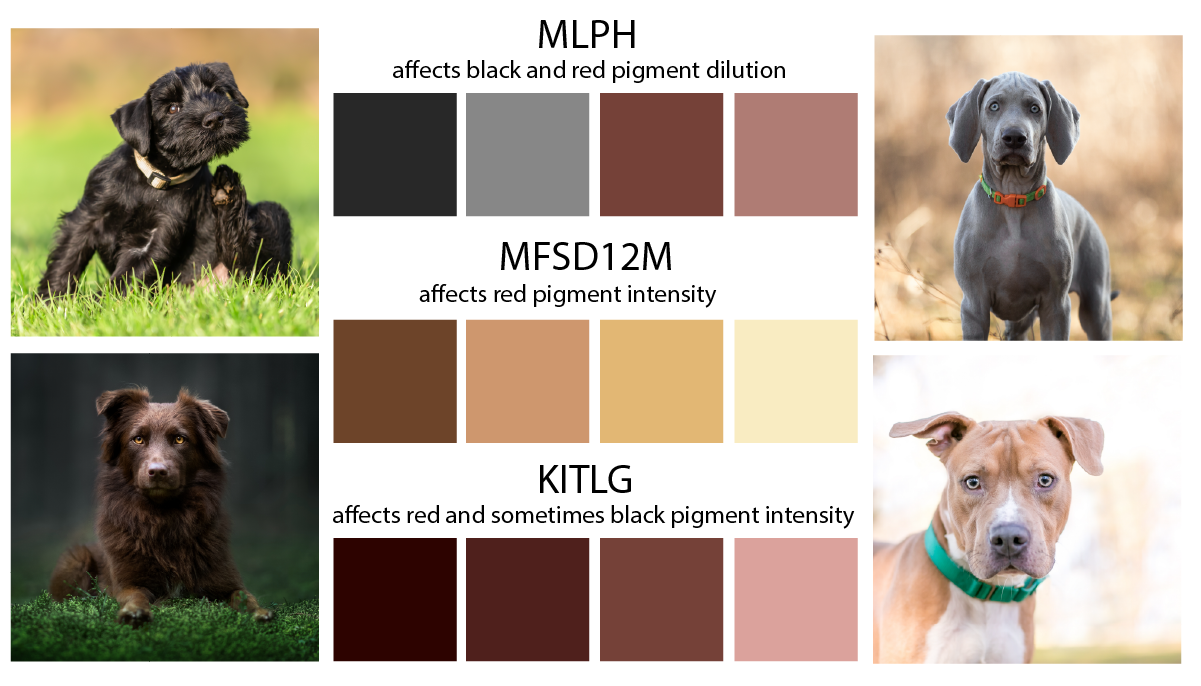
Other genes that affect fur color & pattern
Alleles of other genes can give dogs black masks or saddles (MC1R), turn black pigments into brown (TYRP1), or cause white ticking or other markings. Together, they make dogs with nearly endless variations in fur color and pattern.
Some of the same genes affect color pigments in people and animals, including pigeons! To learn more about feather color and other pigeon traits, visit Pigeon Breeding: Genetics at Work.

Ears
In most dog breeds, one gene has a large effect on ear flop. But several other genes can affect ear flop too—including ones that affect ear length and fur length. Because longer, hairier ears are heavier and thus more likely to flop. That means there’s a lot more variation in ear flop than what you see in Mutt Mixer. Ear flop can also change over a dog’s lifetime. A puppy with floppy ears may have pointed ears as an adolescent and something in between as an adult.
Gene — probably a non-coding TNA on chromosome 10
Researchers think this RNA acts to switch a nearby gene, MSRB3, on and off. In other words, it’s involved in gene regulation.
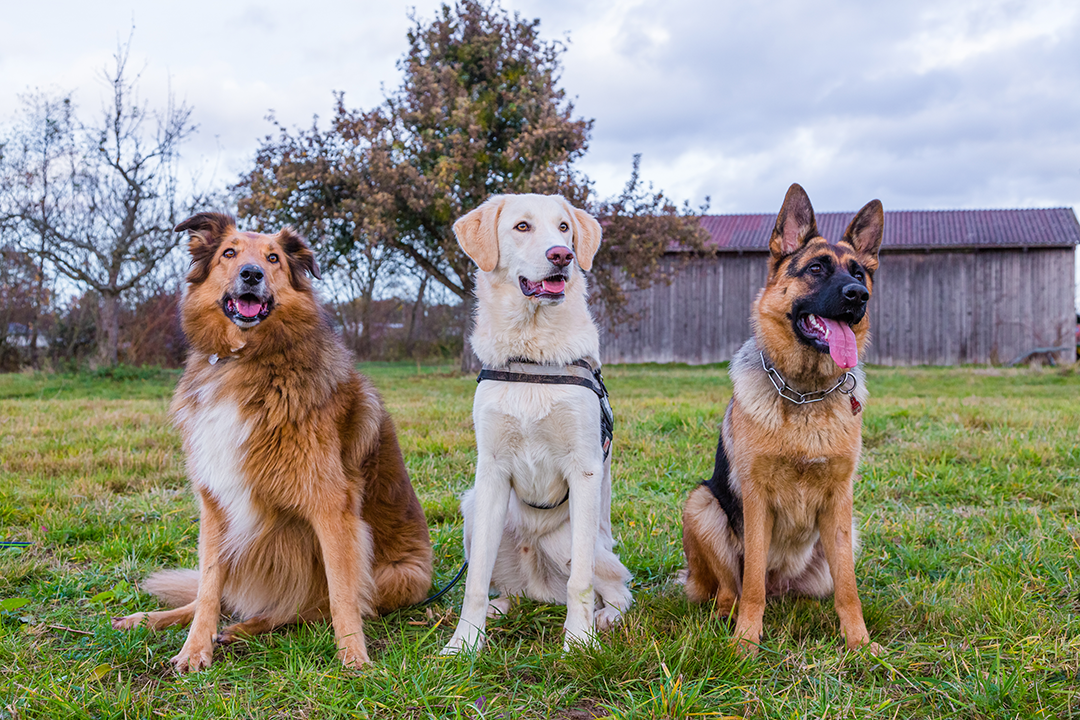
Dogs ears can vary not only in floppiness, but also in hairiness and size.
Furnishings
This trait is also called "wirehair".
Gene — RSPO2
Protein — R-spondin 2
Protein function — This protein works with others to make hair follicles, the tiny organs in the skin that hair grows out of.
The furnishings allele has an extra chunk of DNA inserted into it. The insertion doesn’t affect the protein or how it does its job, but it causes cells to make more of this protein specifically on the muzzle and eyebrows. The extra protein makes the fur here grow longer.
RSPO2 is one of three genes that control most of the variation in dog coat texture across all breeds. The other two are FGF5 and KRT71. FGF5 affects hair length, and KRT71 affects curl.

Genes that affect hair length and curl can have different and interesting effects on furnishings.
Body size
Dogs can have vastly different body sizes. They range from 3-pound chihuahuas to 300-pound mastiffs—and everything between! Scientists have found at least 7 genes in dogs, each with multiple alleles, that explain about half of the variation in body size. And of course environmental factors affect size too, including diet and exercise.
Not surprisingly, many of the genes that affect size are involved in growth and metabolism. And they play similar roles in many species, including people.

The combined effects of many genes and environmental factors make size in dogs a continuous trait. That means that rather than fitting into neat “bins” (like large, medium, and small), dogs come in a nearly endless range of sizes. And this is how most traits work! All-or-none traits (like having furnishings or not) are actually quite rare.
References
Baranowska Körberg, I., Sundström, E., Meadows, J. R., Rosengren Pielberg, G., Gustafson, U., Hedhammar, Å., ... & Andersson, L. (2014). A simple repeat polymorphism in the MITF-M promoter is a key regulator of white spotting in dogs. PLoS One, 9(8), e104363.
Bauer, A., Kehl, A., Jagannathan, V., & Leeb, T. (2018). A novel MLPH variant in dogs with coat colour dilution. Animal genetics, 49(1), 94-97.
Berryere, T. G., Kerns, J. A., Barsh, G. S., & Schmutz, S. M. (2005). Association of an Agouti allele with fawn or sable coat color in domestic dogs. Mammalian Genome, 16(4), 262-272.
Cadieu, E., Neff, M. W., Quignon, P., Walsh, K., Chase, K., Parker, H. G., ... & Ostrander, E. A. (2009). Coat variation in the domestic dog is governed by variants in three genes. science, 326(5949), 150-153.
Candille, S. I., Kaelin, C. B., Cattanach, B. M., Yu, B., Thompson, D. A., Nix, M. A., ... & Barsh, G. S. (2007). A β-defensin mutation causes black coat color in domestic dogs. Science, 318(5855), 1418-1423.
Dreger, D. L., Hooser, B. N., Hughes, A. M., Ganesan, B., Donner, J., Anderson, H., ... & Ekenstedt, K. J. (2019). True Colors: Commercially-acquired morphological genotypes reveal hidden allele variation among dog breeds, informing both trait ancestry and breed potential. PloS one, 14(10), e0223995.
Drögemüller, C., Philipp, U., Haase, B., Günzel-Apel, A. R., & Leeb, T. (2007). A noncoding melanophilin gene (MLPH) SNP at the splice donor of exon 1 represents a candidate causal mutation for coat color dilution in dogs. Journal of heredity, 98(5), 468-473.
Plassais, J., Kim, J., Davis, B. W., Karyadi, D. M., Hogan, A. N., Harris, A. C., ... & Ostrander, E. A. (2019). Whole genome sequencing of canids reveals genomic regions under selection and variants influencing morphology. Nature communications, 10(1), 1-14.
Rimbault, M., Beale, H. C., Schoenebeck, J. J., Hoopes, B. C., Allen, J. J., Kilroy-Glynn, P., ... & Ostrander, E. A. (2013). Derived variants at six genes explain nearly half of size reduction in dog breeds. Genome research, 23(12), 1985-1995.
Schmutz, S. M., Berryere, T. G., & Dreger, D. L. (2009). MITF and white spotting in dogs: a population study. Journal of Heredity, 100(suppl_1), S66-S74.
Schmutz, S. M., & Dreger, D. L. (2014, August). Genetic interactions among three pigmentation loci in domestic dogs. In Proceedings of the 10th World Congress of Genetics Applied to Livestock Production, Vancouver, BC, Canada (pp. 17-22).
Weich, K., Affolter, V., York, D., Rebhun, R., Grahn, R., Kallenberg, A., & Bannasch, D. (2020). Pigment intensity in dogs is associated with a copy number variant upstream of KITLG. Genes, 11(1), 75.